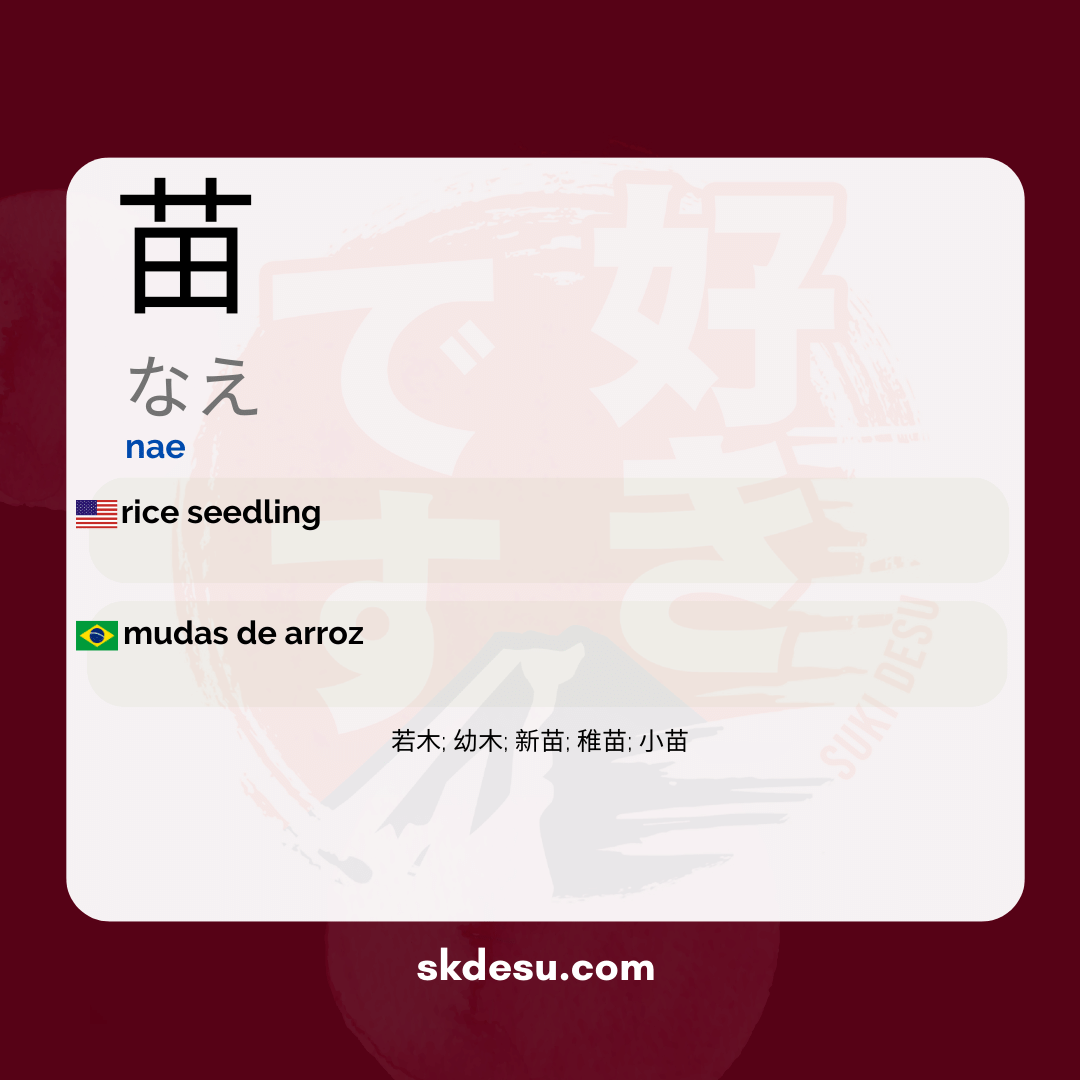Translation and Meaning of: 苗 - nae
The Japanese word 苗[なえ] may seem simple at first glance, but it carries interesting meanings and uses that are worth exploring. If you are learning Japanese or just curious about the language, understanding terms like this can enrich your vocabulary and even your perception of Japanese culture. In this article, we will dive into the meaning, origin, and practical applications of 苗[なえ], as well as discover how it appears in everyday life and media.
Meaning and translation of 苗[なえ]
The term 苗[なえ] refers to "seedling" or "plant shoot," being primarily used to describe young plants that are still in the growth phase. It is a common word in agricultural and gardening contexts but can also appear in more everyday situations. In English, the closest translation would be "plant seedling" or "young plant," depending on the context.
It's worth noting that 苗[なえ] does not apply to seeds, as these are called 種[たね]. The difference is subtle but important: while the seed is the initial stage, the seedling is already a small plant, with roots and leaves in development. This detail helps to avoid confusion when using the word correctly.
Origin and writing of the kanji 苗
The kanji 苗 is composed of two visual elements: the "plant" radical (艹) at the top and the character 田 (which means "rice field") below. This combination is not coincidental—it reflects the historical relationship of the word with agriculture, especially rice cultivation in Japan. The structure of the kanji suggests something that grows from the earth, reinforcing its meaning.
Interestingly, 苗 can also be read as "myou" in certain contexts, such as in proper names or specific terms. However, the most common and useful reading for Japanese students is indeed "nae". If you want to memorize it, a tip is to associate the radical for plant (艹) with the idea of something green and growing.
Cultural usage and frequency in Japan
In Japan, 苗[なえ] is a relatively common word, especially in rural areas or in discussions about agriculture. It frequently appears in plant fairs, gardening stores, and even on TV shows about cultivation. Moreover, many Japanese people have the habit of buying seedlings to nurture at home, whether in small pots or urban gardens.
Another interesting aspect is the use of the word in compound expressions, such as 苗木[なえぎ] (tree seedling) or 苗代[なわしろ] (rice seedling field). These terms show how the Japanese language creates variations from the same root, adapting to different everyday needs. If you enjoy animes or dramas, pay attention—sometimes, 苗[なえ] appears in dialogues about nature or rural life.
Vocabulary
Expand your vocabulary with related words:
Synonyms and similar words
- 若木 (Wakaki) - Young tree
- 幼木 (Youki) - Young tree (more associated with very early age)
- 新苗 (Shinnae) - New waste
- 稚苗 (Chinae) - Immature muda (associated with an early stage of development)
- 小苗 (Shonoe) - Small waste
Romaji: nae
Kana: なえ
Type: noun
L: jlpt-n1
Translation / Meaning: rice seedlings
Meaning in English: rice seedling
Definition: Young stems and leaves of small trees and herbaceous plants.
Quick Access
- Vocabulary
- Writing
- Sentences
How to Write in Japanese - (苗) nae
See below a step-by-step guide on how to write the word by hand in Japanese. (苗) nae:
Example Sentences - (苗) nae
See below some example sentences:
Nenhum resultado encontrado.
Other Words of this Type: noun
See other words from our dictionary that are also: noun

